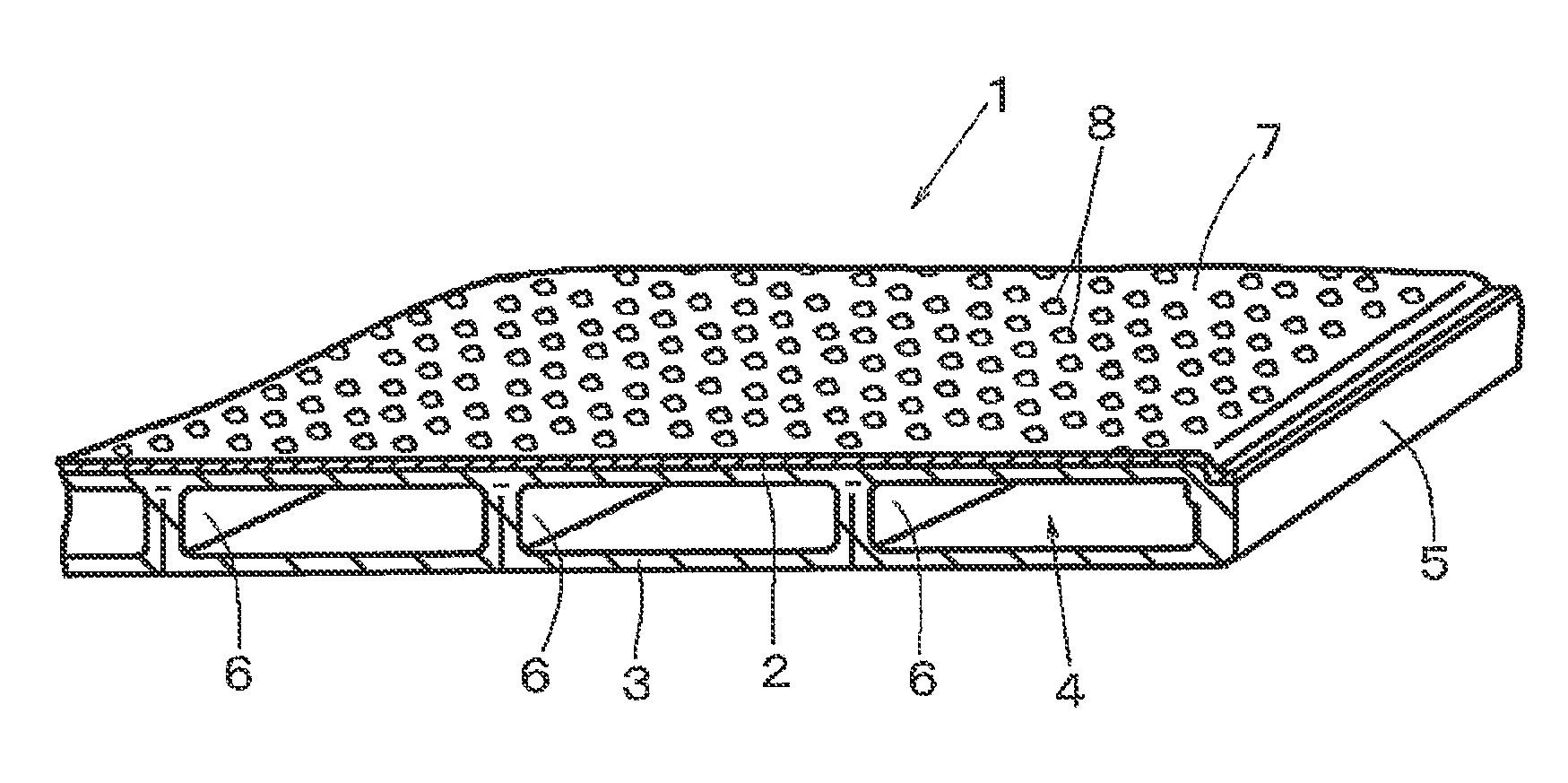Vehicle interior panel and producing method thereof
a technology for interior panels and vehicles, applied in the field of blowmolded panels with skin, can solve the problems of air remaining between the resin sheet and the parison arranged in the mold, deformation of the resin sheet, and remarkably detracted appearance, so as to prevent the appearance detraction, suppress the excess elongation of the end of the cover material, and reduce the effect of elongation
- Summary
- Abstract
- Description
- Claims
- Application Information
AI Technical Summary
Benefits of technology
Problems solved by technology
Method used
Image
Examples
Embodiment Construction
[0029]The invention will be described in detail with reference to the accompanying drawings.
[0030]FIG. 1 is a perspective view of a vehicle interior panel according to the invention, FIG. 2 is a sectional view taken on line A-A of FIG. 1, FIG. 3 is a partially perspective view of the vehicle interior panel of FIG. 1 when viewed from backside, and FIG. 4 is a partially enlarged sectional view showing the vehicle interior panel.
[0031]In FIGS. 1 to 4, the reference numeral 1 designates a vehicle interior panel. The vehicle interior panel 1 has a hollow double-walled structure made of a thermoplastic resin by blow molding, and the vehicle interior panel 1 has a first wall 2 and a second wall 3 which face each other with some intervals. The vehicle interior panel 1 has a peripheral wall 5 between the first wall 2 and the second wall 3, and the peripheral wall 5 forms a hollow space 4. Double-walled ribs 6 having plate-like structures are formed between the first wall 2 and the second wal...
PUM
| Property | Measurement | Unit |
|---|---|---|
| thickness | aaaaa | aaaaa |
| thickness | aaaaa | aaaaa |
| thickness | aaaaa | aaaaa |
Abstract
Description
Claims
Application Information
 Login to View More
Login to View More - R&D
- Intellectual Property
- Life Sciences
- Materials
- Tech Scout
- Unparalleled Data Quality
- Higher Quality Content
- 60% Fewer Hallucinations
Browse by: Latest US Patents, China's latest patents, Technical Efficacy Thesaurus, Application Domain, Technology Topic, Popular Technical Reports.
© 2025 PatSnap. All rights reserved.Legal|Privacy policy|Modern Slavery Act Transparency Statement|Sitemap|About US| Contact US: help@patsnap.com



